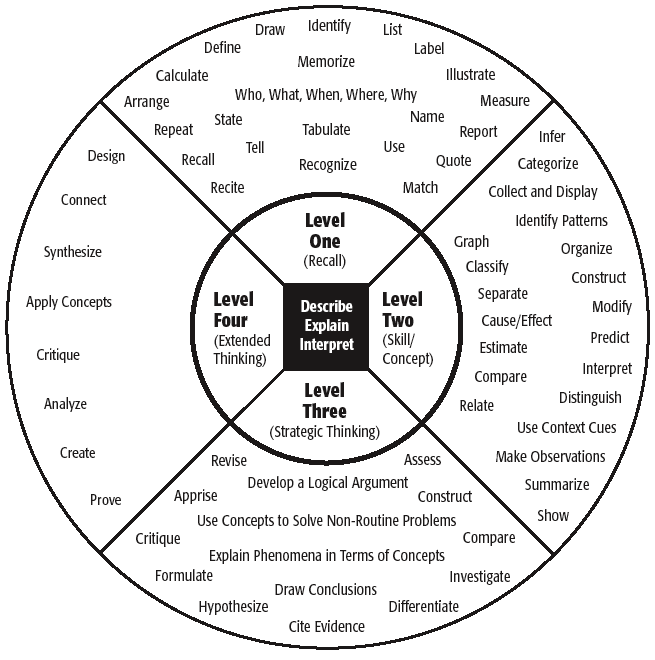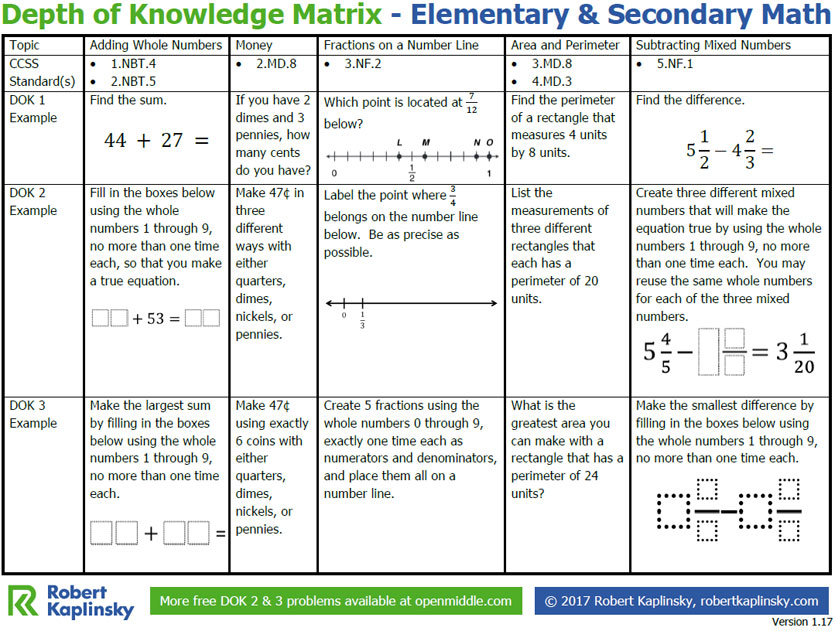You may have read our earlier post “FSA-Preparing for Context Complexities” about the connection between Webb’s Depth of Knowledge complexity levels and the FSA. This post alluded to the importance of taking the complexity levels of standards into consideration when planning for instruction and assessments…but how can we be sure we are incorporating questions and tasks into our lessons that will support students in reaching the intended depth of the standards?
You have more than likely seen the Webb’s Depth of Knowledge verb wheel pictured below.
While this wheel is a great starting point, it does have its limitations. Complexity goes beyond just using a specific verb when questioning a student; we must also take the content, context and depth of thinking required into consideration.
On his website http://staging.robertkaplinsky.com/ , Robert Kaplinsky shares the “Depth of Knowledge Matrix” he has developed for elementary math. The intent of this matrix is to help better distinguish between the depth of knowledge levels as they apply to mathematics through the use of example problems. This tool is a beneficial resource when planning for teaching mathematics standards to the intended depth and cognitive complexity level.

